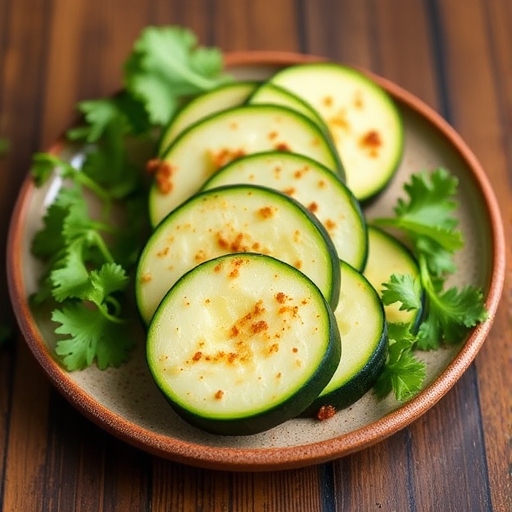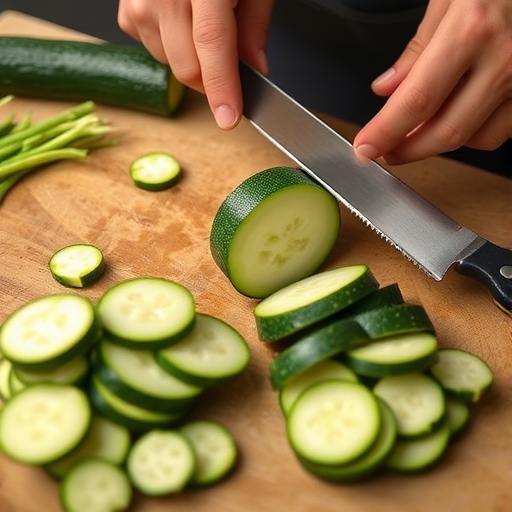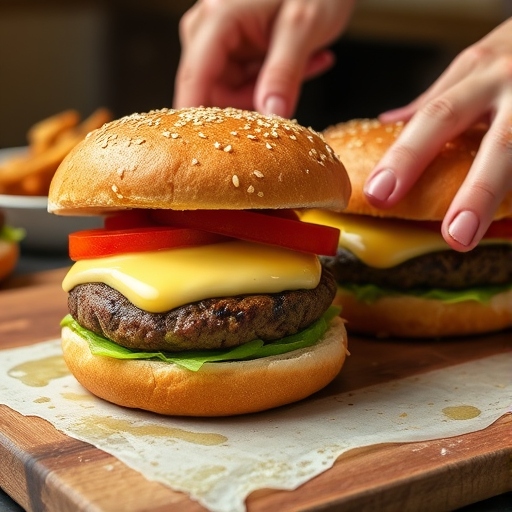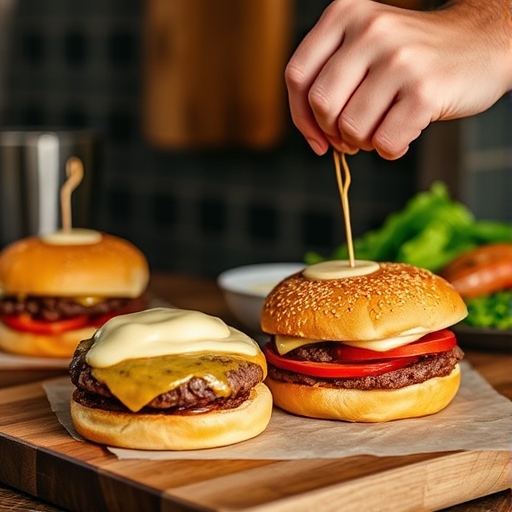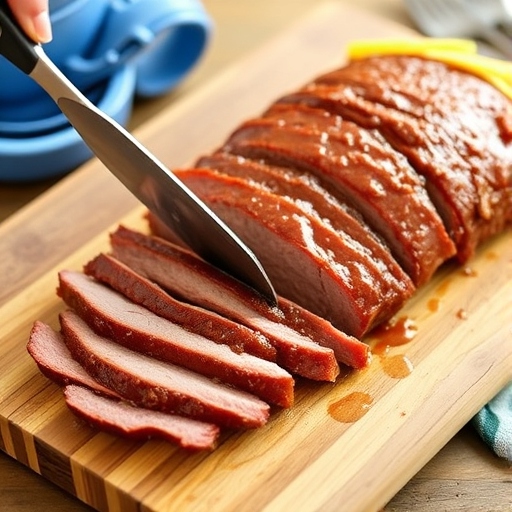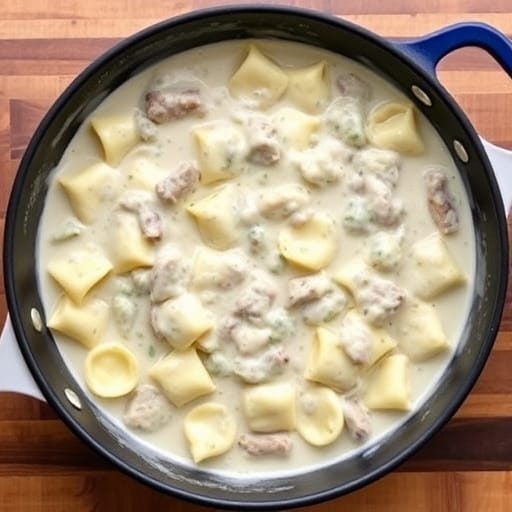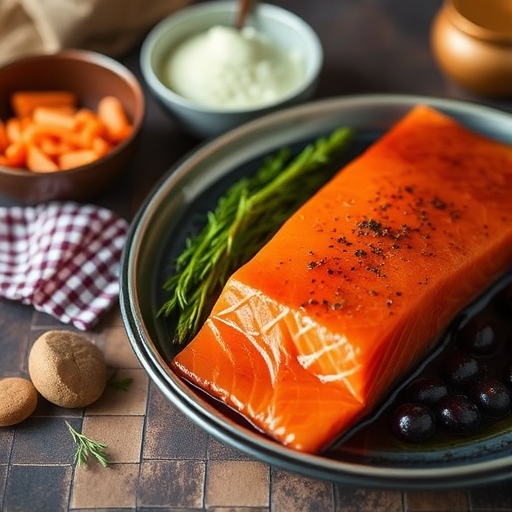Introduction
A quick and delicious stir fry, Black Pepper Beef and Cabbage combines tender strips of beef with crisp cabbage in a savory, peppery sauce. This dish is the perfect blend of flavors and textures, offering a satisfying, healthy meal that can be whipped up in under 30 minutes. With its bold flavors and vibrant ingredients, it’s a great choice for busy weeknights or when you’re looking for a hearty yet light dinner.
Table of Contents
1. The Story Behind Black Pepper Beef and Cabbage Stir Fry
This stir fry is an inspired fusion dish that brings together the classic pairing of beef and cabbage, a combination that dates back to various Asian cuisines. The dish is influenced by the Chinese stir-fry tradition, where high-heat cooking retains the vegetables’ crispness and enhances the natural flavors. The addition of black pepper adds a sharp, spicy kick that elevates the dish and balances the richness of the beef. It’s a perfect example of how simple ingredients can be transformed into a flavorful meal with just the right seasonings.
2. The Benefits of Making Your Own Black Pepper Beef and Cabbage Stir Fry
- Healthy & Nutritious: This dish is packed with protein from the beef and fiber from the cabbage, making it a balanced and nourishing meal.
- Quick & Easy: Ready in less than 30 minutes, it’s a fast meal for busy weeknights.
- Customizable: Add or remove vegetables to suit your preferences or dietary needs.
- Low-Carb: With minimal use of starch, it’s a great choice for those on low-carb diets.
3. Essential Ingredients for the Perfect Black Pepper Beef and Cabbage Stir Fry
- Beef: 1 lb (450g) of flank steak or sirloin, thinly sliced against the grain.
- Cabbage: ½ small head of cabbage, thinly sliced.
- Bell Pepper: 1 medium bell pepper, thinly sliced.
- Onion: 1 medium onion, sliced.
- Garlic: 3 cloves garlic, minced.
- Ginger: 1-inch piece of fresh ginger, grated.
- Soy Sauce: 3 tablespoons (low-sodium is recommended).
- Black Pepper: 1-2 teaspoons freshly ground, or to taste.
- Sesame Oil: 2 tablespoons for cooking.
- Vegetable Oil: 1 tablespoon.
- Rice Vinegar: 1 tablespoon for a touch of acidity.
- Cornstarch: 1 teaspoon, to thicken the sauce.
- Red Pepper Flakes (Optional): A pinch, for some extra heat.
4. Cultural History of Ingredients
- Beef: A staple in many cuisines worldwide, beef is rich in protein and iron. It’s especially popular in Asian stir fry dishes, where it’s quickly cooked to maintain tenderness.
- Cabbage: Cabbage is a key ingredient in Eastern European, Mediterranean, and Asian cuisines. It’s cheap, nutritious, and easy to grow, making it a food staple throughout history.
- Black Pepper: Known as the “king of spices,” black pepper has been traded for centuries and is a prominent seasoning in both Asian and Western cooking. It adds a pungent, spicy flavor that pairs perfectly with beef.
5. Equipment You’ll Need
- Wok or Skillet: A large skillet or wok for stir-frying.
- Cutting Board and Knife: For slicing the beef and vegetables.
- Measuring Spoons: To measure the soy sauce, rice vinegar, and black pepper.
- Grater or Microplane: To grate the ginger.
- Wooden Spoon or Tongs: For stirring the ingredients while cooking.
6. Step-by-Step Instructions for Black Pepper Beef and Cabbage Stir Fry
Preparation:
- Prep the Ingredients:
- Slice the beef thinly against the grain.
- Slice the cabbage, onion, and bell pepper.
- Mince the garlic and grate the ginger.
- Make the Sauce:
- In a small bowl, mix the soy sauce, rice vinegar, and cornstarch. Stir until the cornstarch dissolves. Add the freshly ground black pepper and set aside.
Stir-Fry:
- Heat the Pan:
- Heat 1 tablespoon of vegetable oil and 1 tablespoon of sesame oil in a wok or large skillet over medium-high heat.
- Cook the Beef:
- Add the sliced beef to the pan and stir-fry for 2-3 minutes until browned. Remove the beef and set aside.
- Cook the Vegetables:
- In the same pan, add the remaining sesame oil. Stir-fry the garlic, ginger, onion, and bell pepper for about 2 minutes until fragrant and the vegetables begin to soften.
- Add the Cabbage:
- Add the sliced cabbage to the pan and cook for another 3-4 minutes, stirring occasionally until it’s just tender but still has a slight crunch.
- Combine Beef and Sauce:
- Return the beef to the pan and pour the sauce over the mixture. Stir everything together to coat evenly, cooking for an additional 2-3 minutes to allow the sauce to thicken and the flavors to combine.
Serving:
- Serve:
- Serve the Black Pepper Beef and Cabbage stir fry hot, over a bed of steamed rice or noodles. Garnish with additional black pepper if desired.

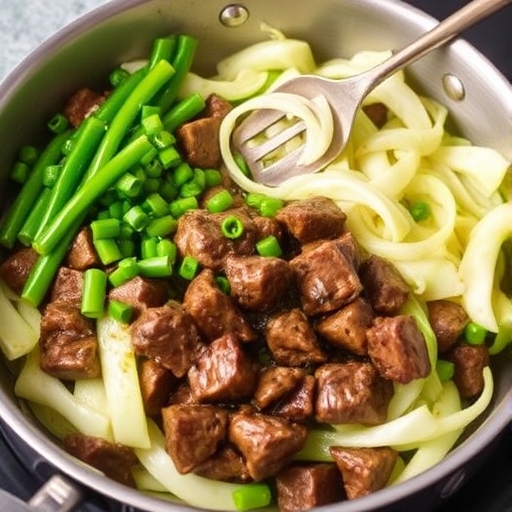
7. Suggestions for Serving and Storing
- Serving:
- This stir fry pairs wonderfully with steamed white or brown rice. You can also serve it with noodles or over cauliflower rice for a low-carb option. For extra flavor, top with freshly chopped cilantro or green onions.
- Storing:
- Store any leftovers in an airtight container in the refrigerator for up to 3 days. Reheat in a skillet over medium heat for the best texture.
8. Chef Simon’s Tips for Black Pepper Beef and Cabbage Stir Fry
- Tenderizing Beef:
- To ensure the beef stays tender, slice it thinly against the grain and avoid overcooking. If you have time, marinate the beef in soy sauce and a dash of cornstarch for 10-15 minutes before cooking to enhance its tenderness.
- Peppery Kick:
- For extra heat, increase the amount of black pepper or add a pinch of red pepper flakes to the stir fry. The black pepper should be freshly ground to maximize flavor.
- Cabbage Tip:
- If you prefer a softer cabbage texture, cook it for a few minutes longer, but remember to keep it slightly crunchy for the best contrast with the beef.
9. Emotional and Psychological Impact of Food
The savory richness of beef paired with the slight crunch of cabbage offers a satisfying sensory experience. The peppery heat awakens the palate, making this stir fry both comforting and invigorating. It’s a great dish to enjoy after a long day, offering both comfort and a burst of flavor to lift your mood.
10. Mindful Cooking Techniques
Focus on the sizzling sounds as you cook, the aroma of garlic and ginger filling the air, and the vibrant colors of the vegetables. Stir-frying at high heat requires your full attention to avoid burning the ingredients and to ensure the perfect texture. Take your time and appreciate the process.
11. Tips for Keeping the Recipe Fresh Longer
- Store Properly: Make sure to refrigerate any leftovers in an airtight container to keep the vegetables and beef fresh.
- Reheat Gently: When reheating, do so on low heat to preserve the texture of the cabbage and beef.
12. Advanced Culinary Terms and Techniques
- Stir-Frying: A high-heat cooking method, commonly used in Asian cuisine, where ingredients are quickly cooked in a small amount of oil while constantly being stirred.
- Deglazing: This technique involves adding liquid (like soy sauce) to a pan to loosen browned bits from the bottom, which adds rich flavor to the dish.
13. Healthy Ingredient Alternatives
- Beef Substitutes: Use lean ground turkey or chicken breast for a lighter protein option.
- Vegetable Substitutes: Swap cabbage for bok choy, napa cabbage, or spinach for variety.
- Low-Sodium Soy Sauce: Opt for low-sodium soy sauce to reduce the salt content in the dish.
14. More Serving Ideas
- Pair with a side of sautéed greens like spinach or bok choy.
- For a more filling meal, add a side of roasted potatoes or sweet potatoes.
15. Common Issues and Solutions
- Overcooked Beef: Make sure the beef is thinly sliced and doesn’t sit in the pan too long. Stir-fry quickly to keep it tender.
- Soggy Cabbage: If the cabbage releases too much water, cook it over higher heat to evaporate excess moisture.
16. Variations to Try
- Vegetarian Version: Replace the beef with tofu or tempeh for a plant-based version of this stir fry.
- Spicy Sichuan Style: Add Sichuan peppercorns or chili paste for a more intense flavor profile.
17. Nutritional Information and Health Benefits
- Calories: Approximately 300-350 calories per serving.
- Protein: 28g, primarily from the beef, making it a great source of lean protein.
- Fiber: 5g, from the cabbage and other vegetables, which aids in digestion.
- Fat: 18g, primarily from the sesame oil and beef, providing essential fatty acids.
- Vitamins & Minerals: Rich in vitamin C from cabbage and bell peppers, iron from the beef, and antioxidants from the black pepper.
Health Benefits:
- Cabbage: High in antioxidants, vitamin C, and fiber, cabbage can support immune health, reduce inflammation, and improve digestion.
- Beef: A great source of iron, zinc, and vitamin B12, which are important for energy production and maintaining a healthy immune system.
- Black Pepper: Contains piperine, which enhances the absorption of nutrients like turmeric, and can help improve digestion and metabolism.
18. The Art of Pairing Black Pepper Beef and Cabbage Stir Fry
Pair this flavorful stir fry with simple sides that won’t overpower the dish but complement its bold, savory profile.
- Rice: Steamed jasmine or basmati rice is the ideal choice. The light fluffiness of the rice balances the intensity of the stir fry.
- Noodles: For a different twist, serve the stir fry over rice noodles or soba for added texture and flavor.
- Vegetables: Steamed or sautéed vegetables like broccoli, snap peas, or carrots add a fresh, crunchy contrast.
19. Weather and Recipe Outcome
This stir fry is perfect for both warm and cooler weather. During the summer, it makes a quick, satisfying meal when you want something light and flavorful without heating up the kitchen too much. In the winter, the richness of the beef and the warmth of the black pepper can provide a comforting dish on a cold night.
20. Other Stir Fry Recipes to Explore
If you love this Black Pepper Beef and Cabbage Stir Fry, you might also enjoy these other stir fry variations:
- Ginger Chicken Stir Fry: A fragrant, fresh dish with the sharp flavor of ginger and tender chicken.
- Vegetable Stir Fry: A vibrant, colorful option with mixed vegetables and a tangy stir-fry sauce.
- Sweet and Sour Pork Stir Fry: A classic with pork, bell peppers, and a tangy-sweet sauce.
21. Focus on Tools and Equipment
When preparing a stir fry, using the right tools can make a big difference in the cooking process.
- Wok or Large Skillet: A wok is ideal for stir frying because its sloped sides allow for even cooking and tossing of ingredients, but a large skillet will work well too.
- Sharp Knife: A sharp knife is essential for slicing the beef thinly and chopping the vegetables evenly, ensuring a perfect cook.
- Spatula or Tongs: Use a spatula or tongs to stir and toss the ingredients quickly in the hot pan without breaking them up.
22. Frequently Asked Questions (with answers)
Q1: Can I make this dish ahead of time?
Yes, this stir fry can be made ahead and stored in the fridge for up to 3 days. However, the cabbage may lose some of its crispness over time.
Q2: Can I substitute beef with another protein?
Yes! You can substitute beef with chicken, shrimp, or tofu for a different flavor or to meet dietary preferences.
Q3: Can I make it spicier?
Absolutely! You can add more black pepper or incorporate chili flakes or even fresh chili peppers for an extra spicy kick.
Q4: Is this recipe gluten-free?
The recipe is gluten-free as long as you use gluten-free soy sauce. Be sure to double-check the label to ensure it is certified gluten-free.
Conclusion
Black Pepper Beef and Cabbage Stir Fry is a versatile, delicious, and nutritious meal that packs a punch of flavor while remaining quick and simple to prepare. Whether you’re looking for a satisfying weeknight dinner or a dish to impress guests, this stir fry offers the perfect balance of savory beef, crisp cabbage, and the sharp spice of black pepper. It’s a dish that can be customized to suit your preferences and dietary needs, making it an excellent addition to any meal rotation. So gather your ingredients, fire up the stove, and treat yourself to this flavorful stir fry!
This recipe is a perfect example of how simple, fresh ingredients can come together to create a dish that’s not only satisfying but also packed with nutritional benefits. By following the step-by-step instructions and using Chef Simon’s expert tips, you’ll be able to recreate this meal in no time. Whether you’re a beginner or a seasoned cook, this Black Pepper Beef and Cabbage Stir Fry will quickly become one of your favorite go-to recipes.



